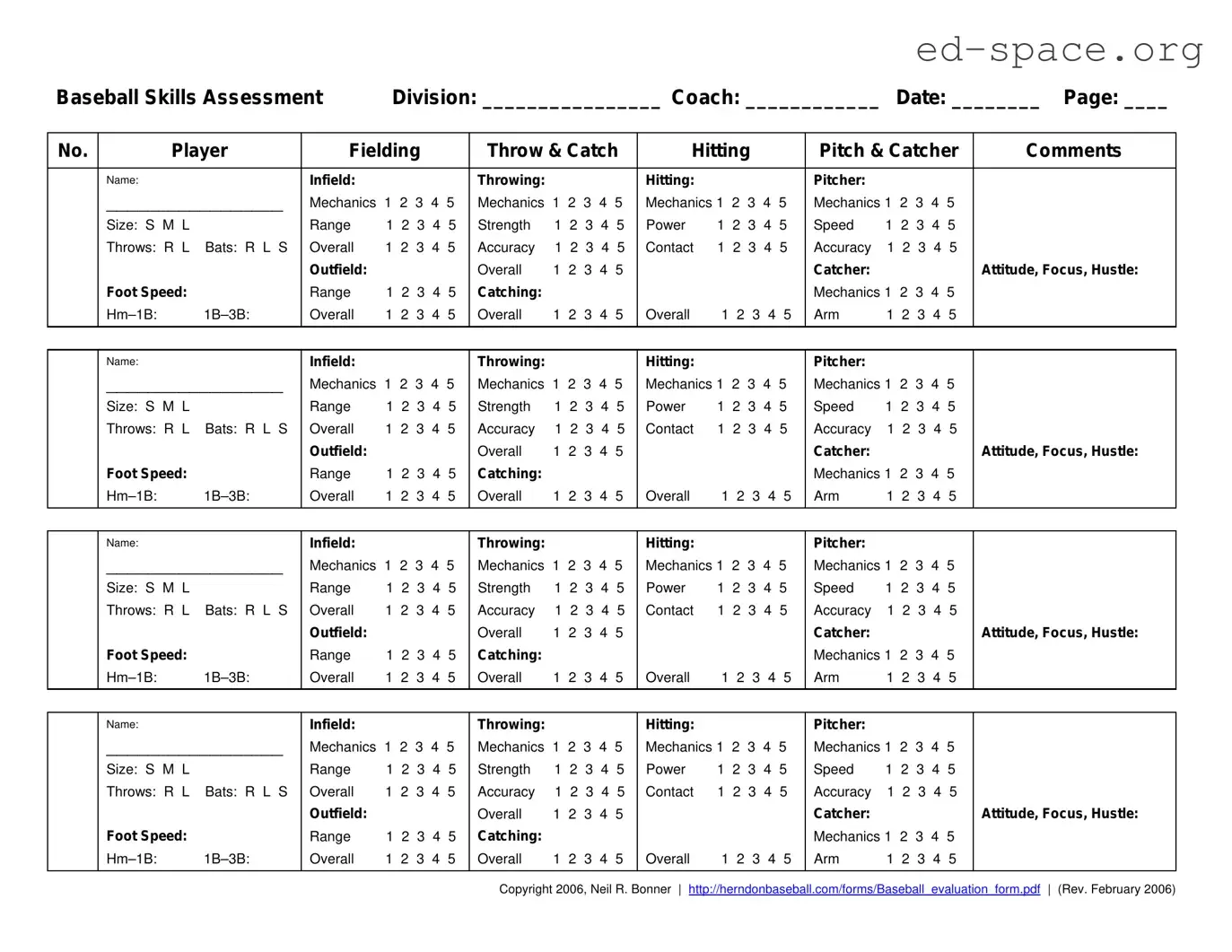What is the purpose of the Baseball Skills Assessment Form?
The Baseball Skills Assessment Form is designed to systematically evaluate the skills of players trying out for baseball teams, specifically for All-Star travel teams and draft selections within house leagues. It measures a player's abilities in various categories, including fielding, throwing, catching, hitting, and running, using a five-point scale. This standardized approach helps coaches and evaluators identify the strongest candidates by objectively quantifying their skills relative to their peers.
How are players scored using this form?
Players are scored on a five-point scale across different skill categories: fielding, throwing, catching, hitting, and running. A score of five indicates exceptional ability, while a score of one indicates a poor level of ability. Scores of two, three, and four represent intermediate skill levels. This quantitative scoring system allows evaluators to fairly and consistently assess each player's strengths and weaknesses. Overall performance, attitudes, focus, hustle, and specific abilities like speed can also influence the final score, ensuring a comprehensive evaluation of each player's potential contribution to the team.
How does the assessment form contribute to the selection of players for a team?
The scores from the Baseball Skills Assessment Form are the primary tool for selecting the top eight players for the team, ensuring that these selections are based on objective assessments of each player’s abilities. The All-Star manager has discretion to select additional players based on other criteria deemed important for the team's success. By balancing quantitative scores with qualitative assessments, the selection process aims to create a well-rounded and competitive team, taking into account not only the players' physical skills but also their attitude, focus, and hustle.
Can you explain the structure of the tryouts as recommended?
The recommended structure for tryouts involves a series of activities designed to evaluate all the necessary baseball skills within a timeframe of about 2 to 2.5 hours. It begins with opening remarks and a warm-up, followed by timed base running, infield and outfield skills assessment, a hitting session, and concludes with a special session for those interested in pitching or catching. This structured approach ensures that players are assessed in a variety of contexts, reflecting the diverse skill set required for competitive baseball, while also maintaining an efficient and orderly tryout process.

